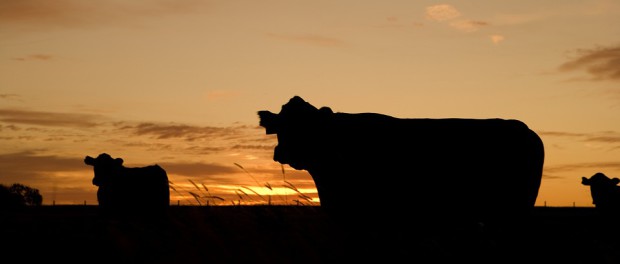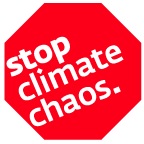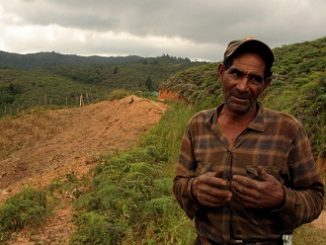Olivier De Schutter, Hans Herren and Emile Frison (on behalf of the International Panel of Experts on Sustainable Food Systems (IPES-Food).

ARC2020 debate opener on livestock
When it comes to climate change, we are desperate to believe that there is an easy way out. In recent years, biofuels and then shale gas have allowed us to believe that our energy needs might continue to be met without any real trade-offs or lifestyle changes, or that our food needs might be seamlessly provided by new breadbasket regions at previously icy latitudes. Ultimately, the excitement dies down and the climate challenge continues to loom large. However, just enough doubt has been sown to hold back a more fundamental shift in the way we produce and consume. The waters have been muddied just enough to justify a ‘wait and see’ approach.
These are the dangers when it comes to the livestock debate. There is a major risk that the more complex conundrums will prevent us from answering other questions that are resoundingly simple.
Two key points must therefore be established from the outset. Firstly, current rates of meat consumption in wealthy countries – particularly red meat – are unsustainable under any circumstances, and must be reduced due to the burgeoning health and environmental impacts.
Secondly, industrial feedlot production yields too many negative outcomes on too many fronts to be justifiable. These systems require large quantities of imported feed crops, thereby displacing potential food production: an area the size of France is required for the EU to import its feed requirements. Meanwhile, they depend on extensive use of antibiotics, entail major GHG emissions (both in the production area and in the shipping of inputs and outputs to far-off locations), cause localized environmental degradation due to the huge waste they produce, and often subject animals to stressful and inhumane conditions. Industrial feedlots cannot conceivably be part of the sustainable food systems of the future. Their costs are particularly hard to justify when, as is so often the case, industrial feedlots serve up meat as an export commodity rather than as a source of protein for local populations.
Beyond this, there are indeed many complexities. Well-managed animal grazing can be compatible with carbon sequestration in soils. But grain-fed vs grass-fed is not what matters most. Whether or not livestock production is environmentally viable depends on the extent to which it is integrated into ecosystems, landscapes, farming systems and livelihood activities.
For example, in mountainous zones, livestock grazing can occur with low environmental impacts and few opportunity costs. Meanwhile, mixed crop-livestock systems deliver resource efficiencies by using animal manure to fertilize the soil, feeding crop by-products to animals and a host of other synergies. Where animals live off grass or agricultural by-products, the amount of calories for human consumption that they yield may actually be greater than those consumed. By way of comparison, typical feed conversion ratios range from 2 kg feed per kg meat to as much as 20kg in some beef cattle systems, while varying considerably between different animals, different farming systems and different calculation methods.
Integrated systems also help to diversify farmers’ income, and can therefore sustain livelihoods and keep small farmers on the land. Without them, the environmental impacts of other land uses (e.g. large-scale commodity crop monocultures) could be infinitely worse. In other words, the more holistically the environmental footprint is considered, the better the mixed systems fare.
There is no simple formula for defining the threshold between sustainable and unsustainable livestock farming. However, it is already clear that the more livestock farming is relocalized and reintegrated with landscapes, the more that feed is sourced locally and waste is re-used on the farm, and the more it is confined to land and to regions where few or no alternatives exist, the more sustainable it becomes.
However, the economic, socio-cultural and environmental viability of livestock farming in certain conditions should not be confused with the dominant modes of production that are currently practiced in order to support the exorbitant rates of meat and dairy consumption to which we have become accustomed in wealthy countries. There is no silver bullet for maintaining this pathway. The promises of regenerative livestock farming must not become the latest chapter of the fairytale which says that climate change can be mitigated without major lifestyle changes.
Olivier De Schutter, Hans Herren and Emile Frison on behalf of the International Panel of Experts on Sustainable Food Systems (IPES-Food).






1 Trackback / Pingback
Comments are closed.